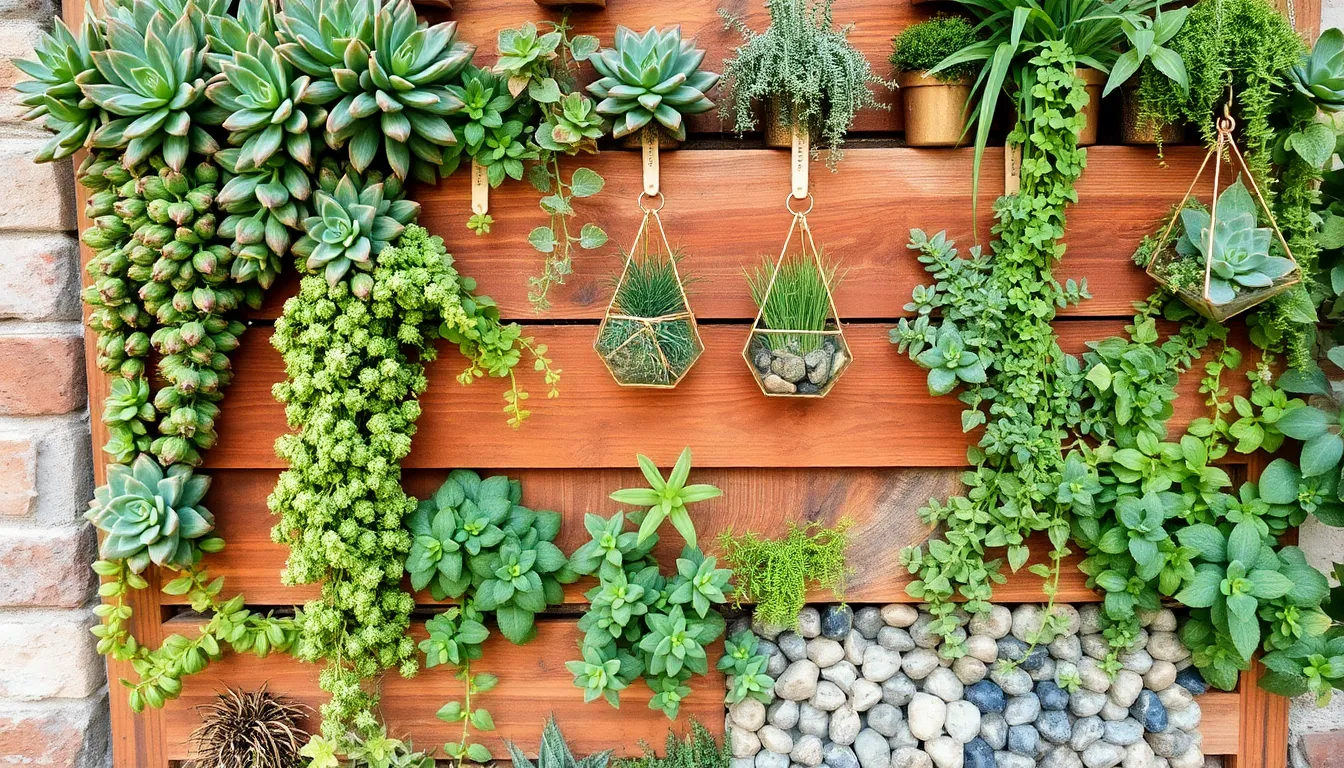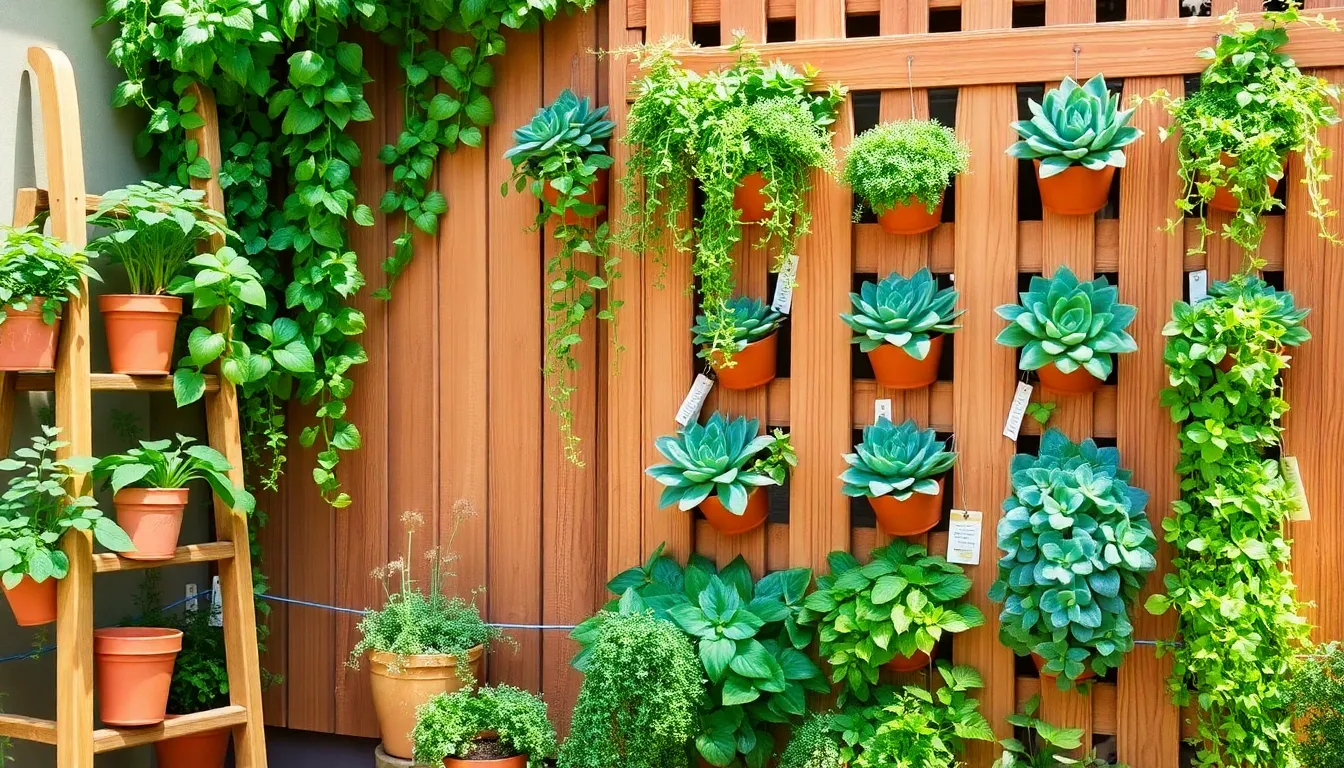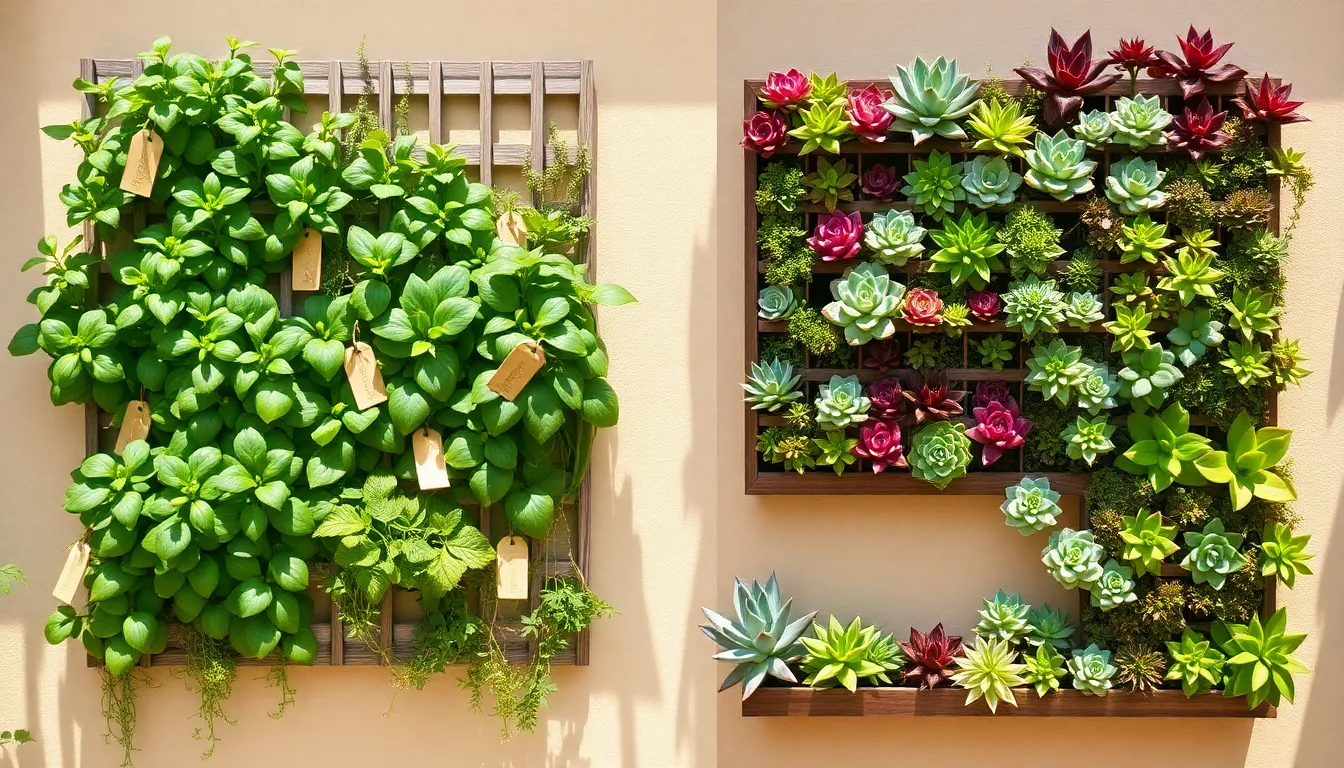In an era where water conservation is more crucial than ever, finding creative ways to embrace gardening while being mindful of our resources is both a challenge and an opportunity. Whether you’re just starting out with a green thumb or have been nurturing plants for years, vertical gardening offers an innovative solution that not only saves space but also minimizes water usage.
Imagine transforming a bare wall or a small corner of your home into a lush oasis, teeming with life and color. With vertical gardens, you can achieve just that, and the best part is, they require less water than traditional gardens. In this article, we’ll explore ten inspiring ideas for low-water vertical gardens that will captivate your imagination and inspire you to make the most of your space.
You’ll discover practical tips on how to select the right plants, design stunning layouts, and implement efficient watering systems that suit your lifestyle. These inspirations are designed to be both beautiful and sustainable, proving that even the smallest spaces can yield magnificent results. Whether you’re looking to add a touch of nature to your urban apartment or enhance your outdoor patio, you’ll find that creating a vertical garden is not only accessible but also immensely rewarding.
Understanding Vertical Garden Basics
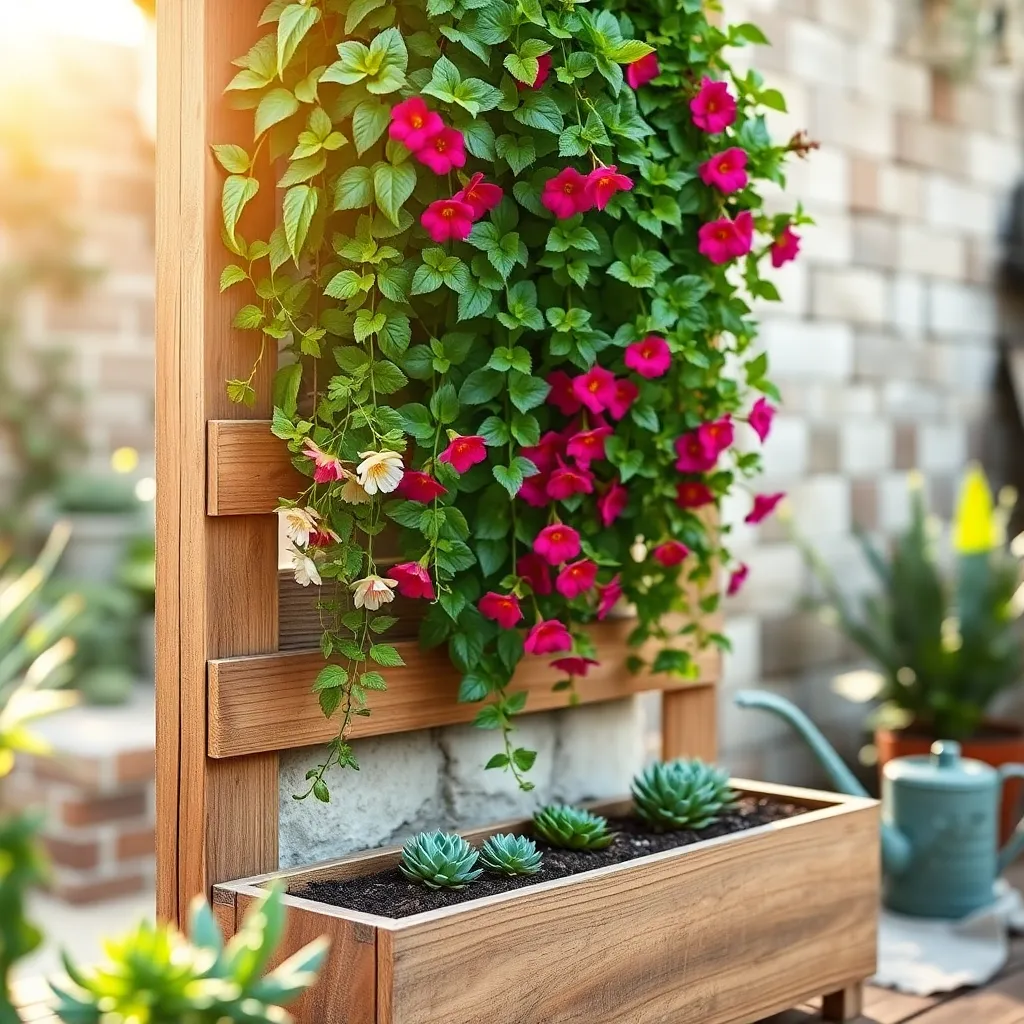
Vertical gardening is a fantastic solution for those with limited ground space, allowing you to grow a variety of plants upwards. To start, choose a vertical structure such as a trellis, wall-mounted planters, or hanging pots that suits your space and style.
Choose plants that thrive in vertical settings, such as climbers like ivy or flowering vines like clematis. Opt for drought-tolerant varieties that require less water, such as succulents or herbs like rosemary and thyme, which are perfect for low-water vertical gardens.
When it comes to soil, use a lightweight, well-draining potting mix to prevent root rot and ensure efficient water use. For advanced gardeners, consider incorporating a drip irrigation system to deliver water directly to the roots, minimizing waste and maximizing plant health.
Ensure your vertical garden is positioned to receive adequate sunlight; most plants prefer at least six hours of direct sunlight daily. In shaded areas, consider shade-tolerant plants like ferns or hostas, which can add lush greenery without the need for constant watering.
Choosing Water-Efficient Plants
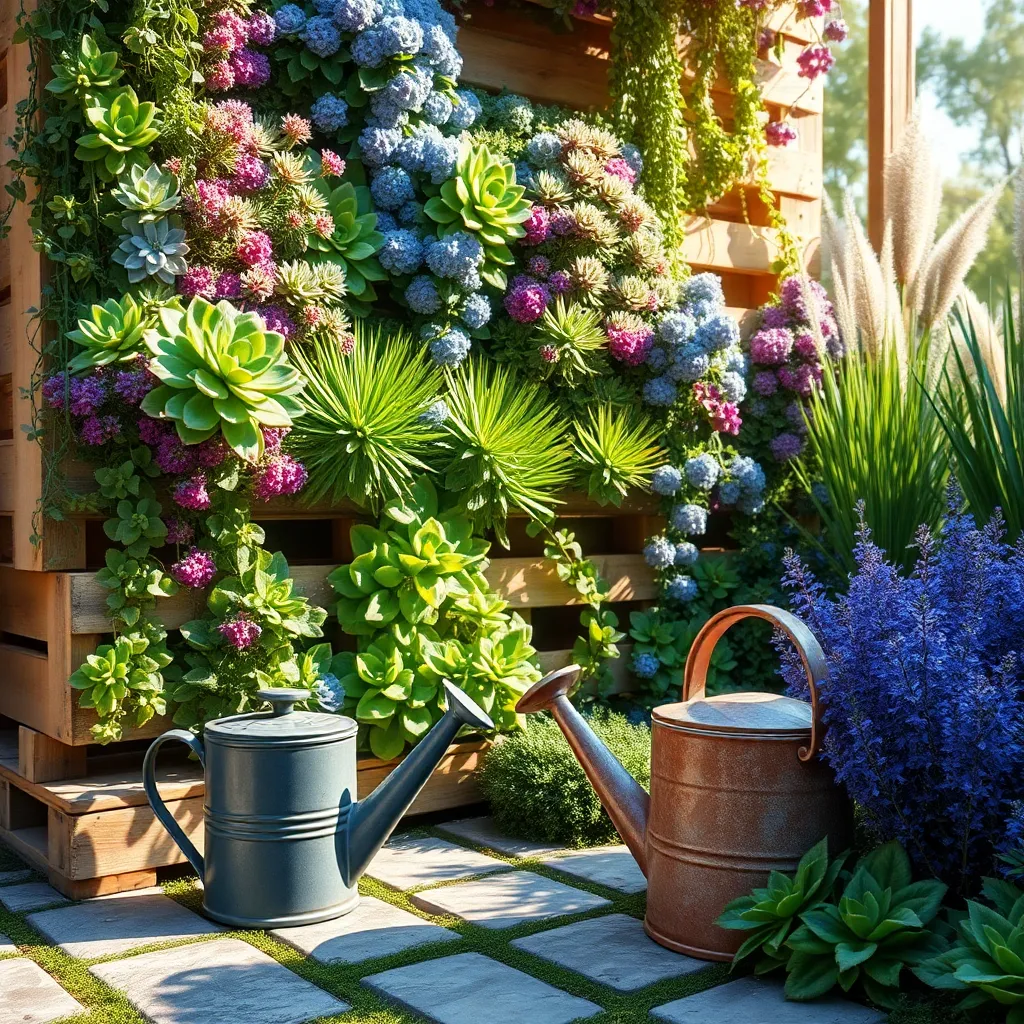
When choosing plants for a low-water vertical garden, it’s crucial to select species that naturally thrive in arid conditions. Succulents and cacti are excellent choices, as they store water in their leaves and require minimal irrigation.
Consider integrating plants like lavender and sedum, which are both drought-tolerant and visually appealing. These plants not only require less water but also attract beneficial insects, enhancing the biodiversity of your garden.
For those starting, it’s helpful to plant in a well-draining soil mix, such as a combination of sand, perlite, and compost. This mix prevents root rot by allowing excess water to escape quickly, keeping the plants healthy.
Experienced gardeners might experiment with layering different plants to create a vertical tapestry of textures and colors. Use trailing plants like string of pearls to cascade over the edges, adding depth and interest to your display.
To maintain a thriving low-water garden, consider using drip irrigation systems for precise watering. These systems can be adjusted to deliver water directly to the roots, reducing waste and ensuring each plant receives the moisture it needs.
Regularly monitor the moisture levels in your vertical garden, especially during hot weather. A simple moisture meter can be a valuable tool to prevent overwatering—a common mistake even seasoned gardeners can make.
Innovative Wall-Mounted Designs

Wall-mounted vertical gardens are a modern solution for those with limited ground space, offering a stunning visual impact while being practical. To start, consider using modular wall planters that allow you to easily rearrange plants and optimize sunlight exposure throughout the year.
Begin by selecting lightweight, drought-tolerant plants such as succulents or herbs, which thrive in well-draining soil. Ensure each module has adequate drainage holes to prevent waterlogging, which is crucial for the health of low-water plants.
For beginners, a simple mixture of cactus soil and perlite can provide the perfect growing medium, ensuring your wall-mounted garden remains light and easy to maintain. More advanced gardeners might experiment with incorporating a drip irrigation system, which can be hidden behind the modules to keep the setup sleek and minimize water use.
Regularly check the moisture level of the soil by touching it with your fingers; if it feels dry, it’s time to water, but be cautious not to over-water. Consider mounting your garden on a south-facing wall to maximize sunlight, ensuring your plants receive the bright light they often crave.
DIY Low-Water Planter Ideas
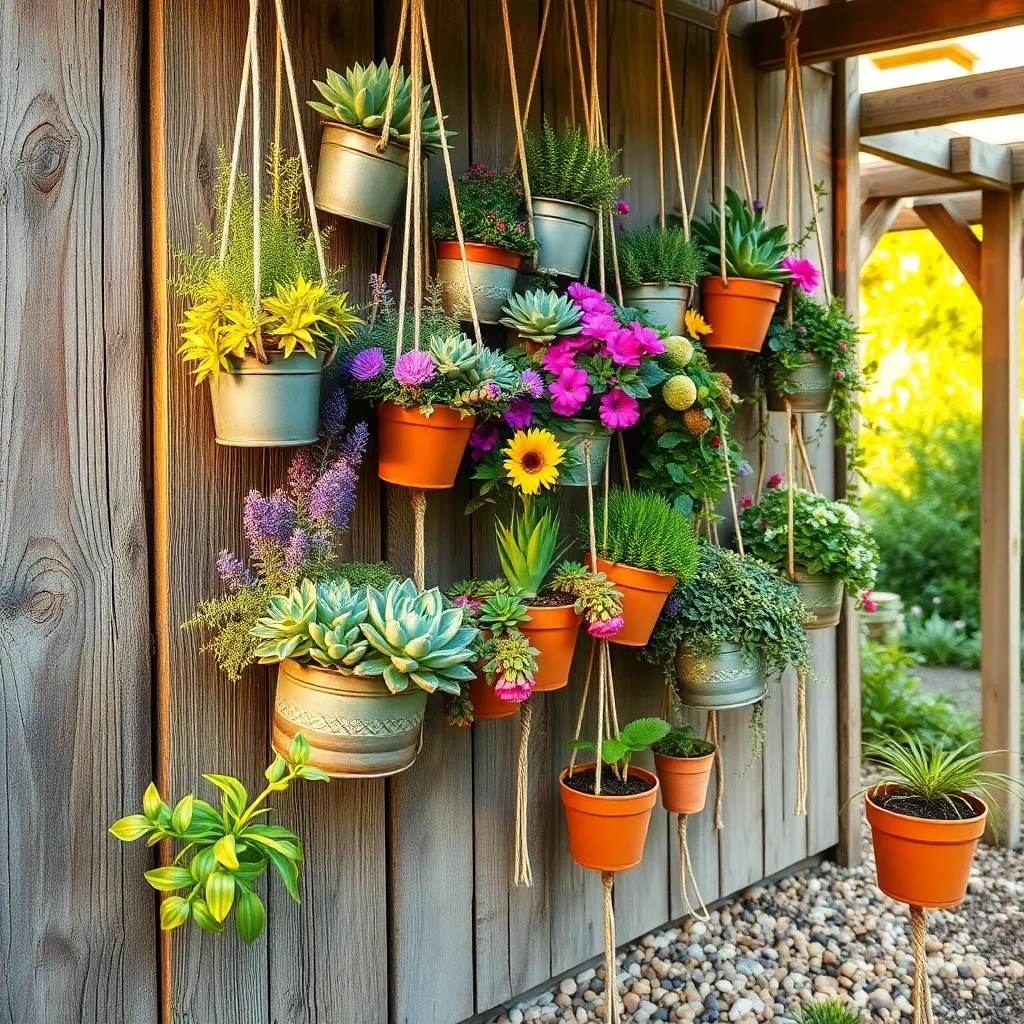
Creating a low-water planter is both environmentally friendly and cost-effective. Start by selecting containers made from materials like ceramic or plastic, which help retain moisture better than porous options.
To ensure your plants thrive with minimal water, choose drought-tolerant plants such as succulents, lavender, or rosemary. These plants naturally require less water and can survive in a variety of soil conditions, making them perfect for vertical planters.
Incorporate a well-draining soil mix to prevent water from pooling, which can lead to root rot. A mix of cactus soil with a bit of perlite or pumice ensures that excess moisture is efficiently drained away.
Consider installing a simple drip irrigation system, which delivers water directly to the roots and minimizes evaporation. This technique is especially useful for larger vertical gardens, where manual watering can become cumbersome.
For added efficiency, incorporate mulch on the top layer of soil to conserve moisture and reduce water needs. Organic mulch like bark or wood chips not only retains water but also suppresses weeds and enhances soil quality over time.
Irrigation Systems for Vertical Gardens
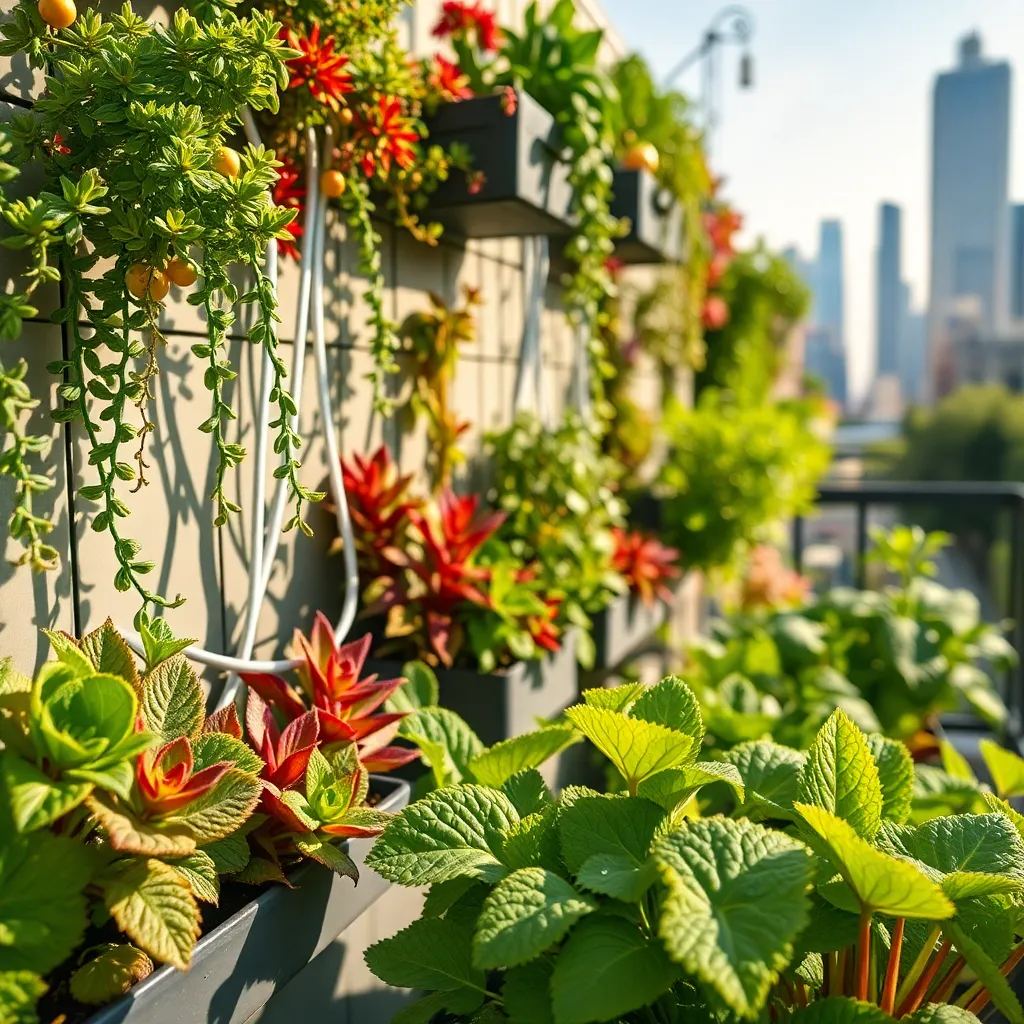
Vertical gardens offer a unique way to maximize space while conserving water, but they require a well-designed irrigation system to thrive. One of the simplest solutions is a drip irrigation system, which delivers water directly to the roots, minimizing evaporation and runoff.
Another popular method is incorporating a wicking system, where capillary action draws water up into the plant roots. Ensure your vertical garden has adequate drainage to prevent waterlogging, which can harm plants. A wicking system is particularly useful for gardens that utilize fabric pockets or felt layers to hold plants.
For those looking to automate their watering process, consider installing a timed irrigation system. This setup can be tailored to deliver precise amounts of water at specific times, reducing waste and ensuring your plants receive consistent moisture. Adjust the timing depending on the season and plant needs—more frequent watering during hot months and less in cooler, rainy periods.
When choosing plants for a low-water vertical garden, opt for varieties known for drought tolerance, such as succulents, herbs, or certain ferns. These plants typically require less frequent watering, making them ideal candidates for vertical arrangements. Additionally, consider using a soil mix that retains moisture yet drains well, such as one that includes perlite or coco coir.
Maximizing Space with Green Walls
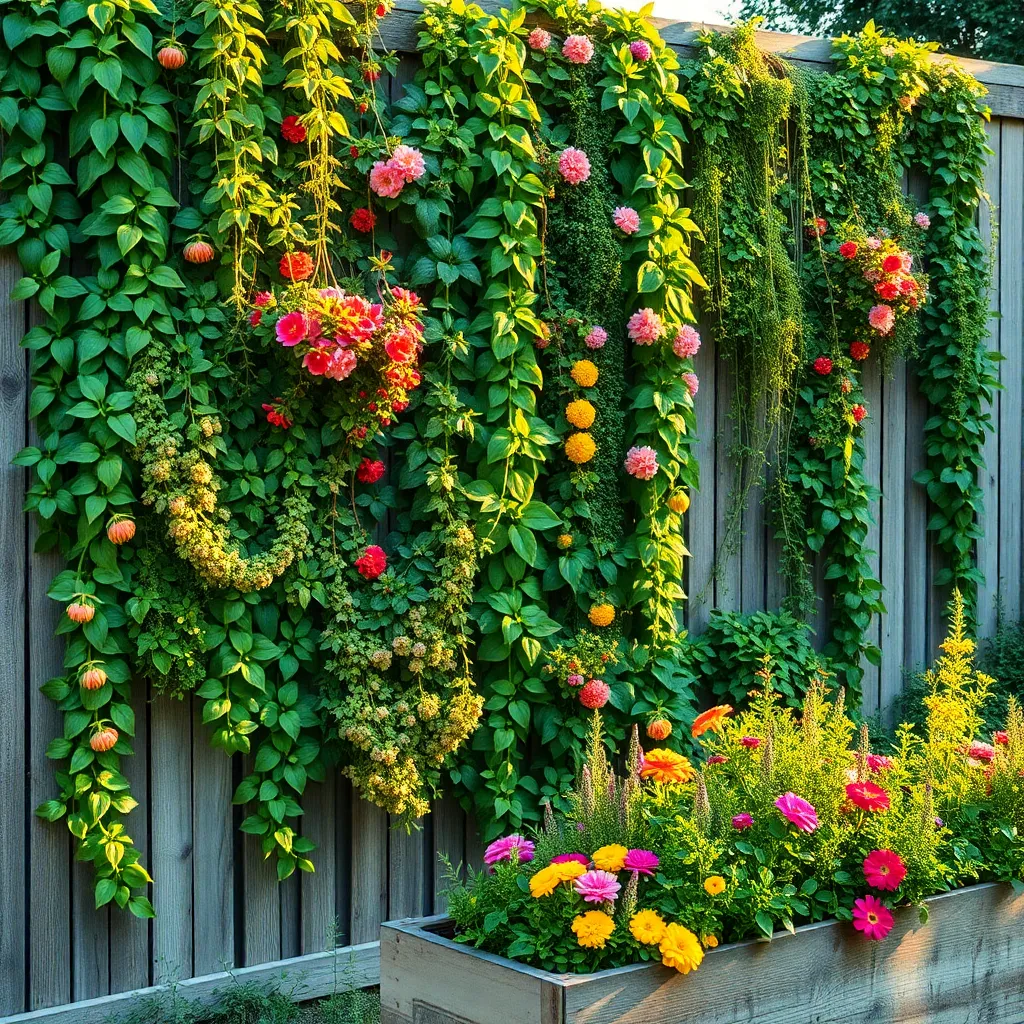
Transforming vertical spaces into green walls is a clever way to maximize gardening space. Start by choosing a sturdy framework, such as a trellis or modular panels, to support your plants securely.
Begin with plants that thrive in your climate and require minimal water, like succulents and ferns. For a successful green wall, use a well-draining soil mix, possibly incorporating perlite or sand, to prevent waterlogging.
Position your green wall where it will receive adequate sunlight, usually on a south-facing wall in most regions. Consider the light requirements of your chosen plants to ensure they thrive, with some needing partial shade while others enjoy full sun.
To keep maintenance low, set up a simple drip irrigation system that can be easily integrated into the framework. This approach ensures consistent moisture levels, reducing the need for frequent hand-watering, especially in hot climates.
For advanced gardeners, adding a variety of textures and colors can create a dynamic, visually appealing wall. Mix different plant species, like trailing vines and bushy herbs, to add interest and enhance biodiversity in your garden.
Sustainable Materials for Vertical Gardens
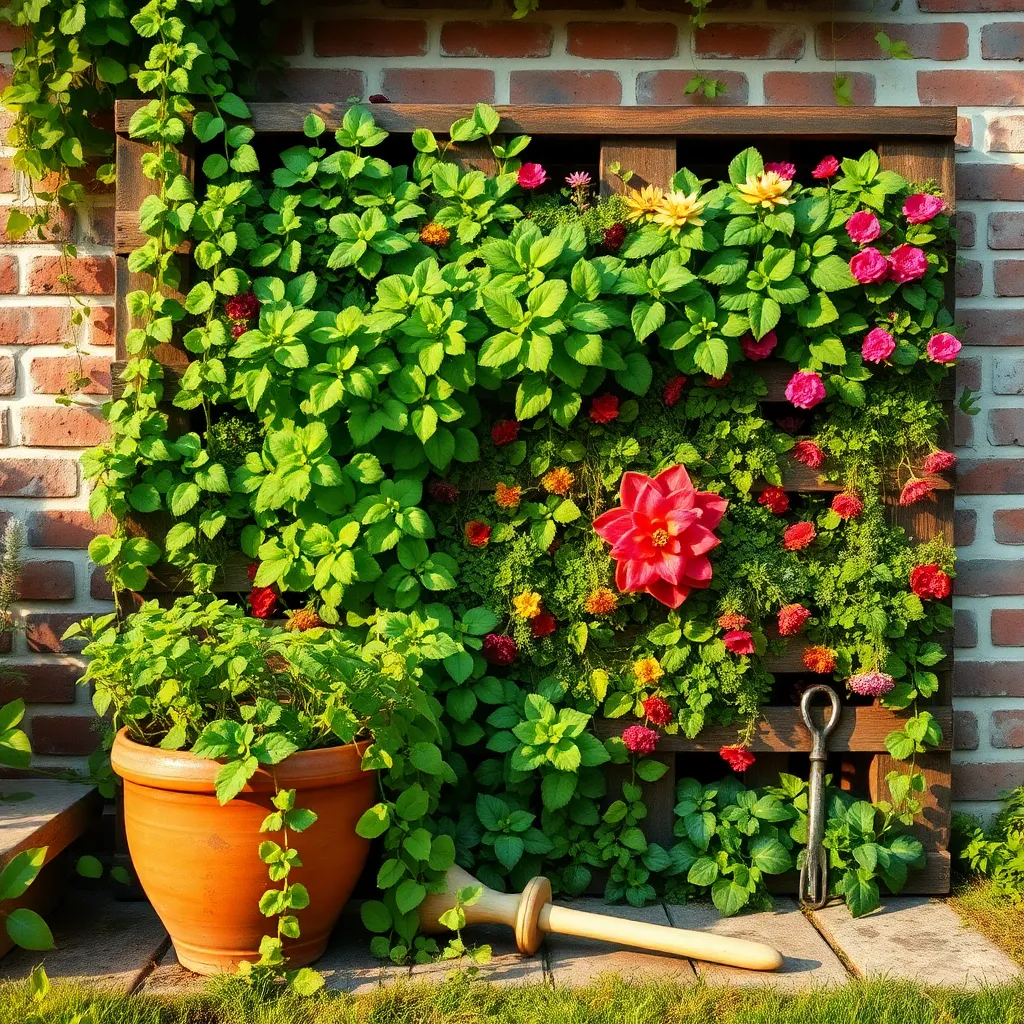
Vertical gardens are an excellent way to incorporate sustainable materials into your gardening practice. By using recycled materials like old pallets or repurposed metal grids, you can create a sturdy framework that supports your plants while minimizing waste.
Consider using biodegradable materials such as coconut coir or jute as a growing medium. These materials are not only eco-friendly but also provide excellent drainage and aeration, essential for the healthy growth of your vertical garden plants.
For those looking to go the extra mile, investing in self-watering systems can significantly reduce water usage. These systems can be crafted from recycled items, like plastic bottles, ensuring that your garden remains both water-efficient and sustainable.
Use native plants in your vertical garden to further enhance sustainability. Native plants require less water and are better adapted to local climates, making them a smart choice for eco-conscious gardeners.
Incorporating Succulents in Vertical Gardens
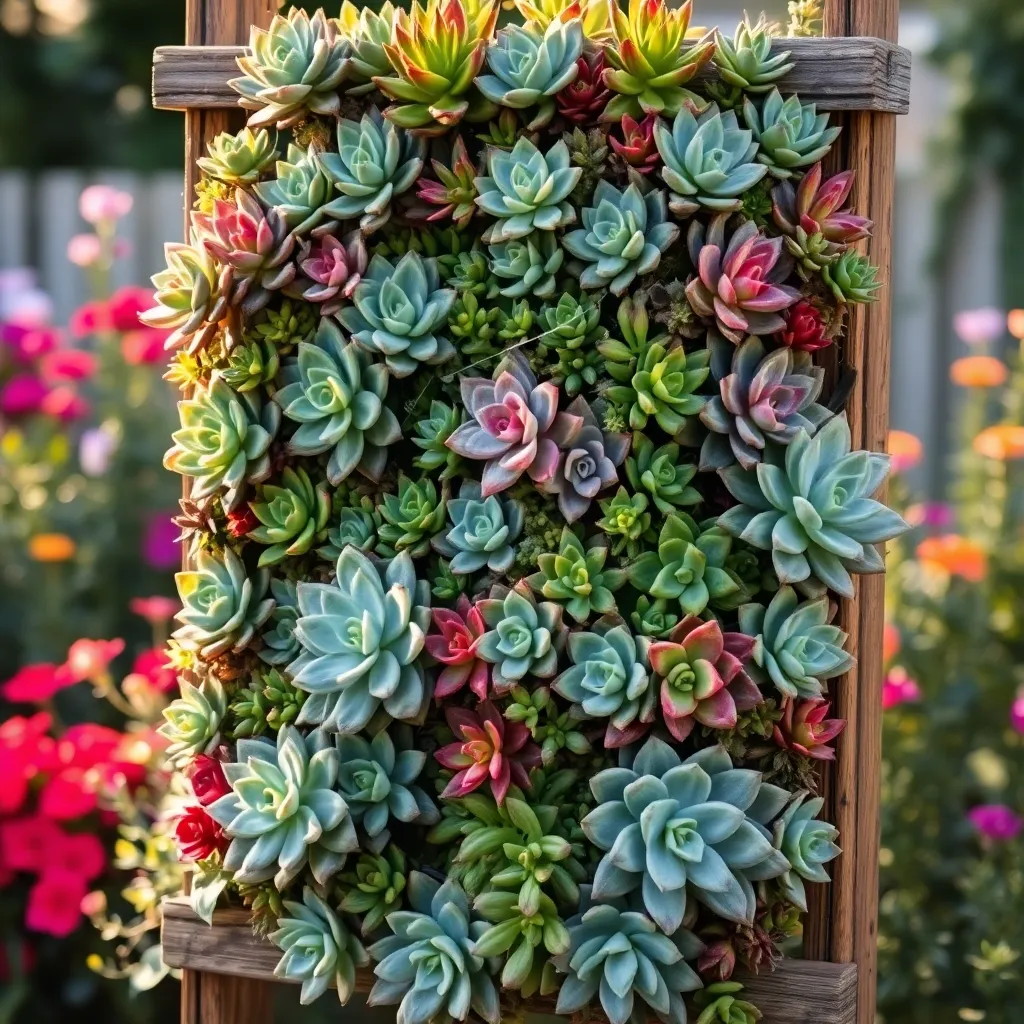
Succulents are an excellent choice for vertical gardens due to their low water requirements and striking appearance. They can thrive in vertical setups because of their ability to store water in their leaves, making them perfect for gardeners who prefer low-maintenance plants.
To successfully incorporate succulents into your vertical garden, start by selecting a sturdy vertical frame that can support your plants. Opt for materials like a wooden pallet or a metal grid, ensuring there is enough depth for the root systems to establish themselves.
Use a well-draining soil mix specifically designed for succulents to prevent root rot. You can create your own mix by combining equal parts potting soil, coarse sand, and perlite, which will ensure proper drainage and aeration.
Water your succulents sparingly, allowing the soil to dry completely between waterings, which typically means watering once every 1-2 weeks depending on the climate. Be mindful of the weather conditions; during rainy seasons, you might need to reduce watering to prevent over-saturation.
For more advanced gardeners, consider incorporating a drip irrigation system to provide consistent moisture without overwatering. This setup can be especially effective in larger installations, ensuring each plant receives adequate hydration while minimizing waste.
Low-Maintenance Vertical Garden Tips
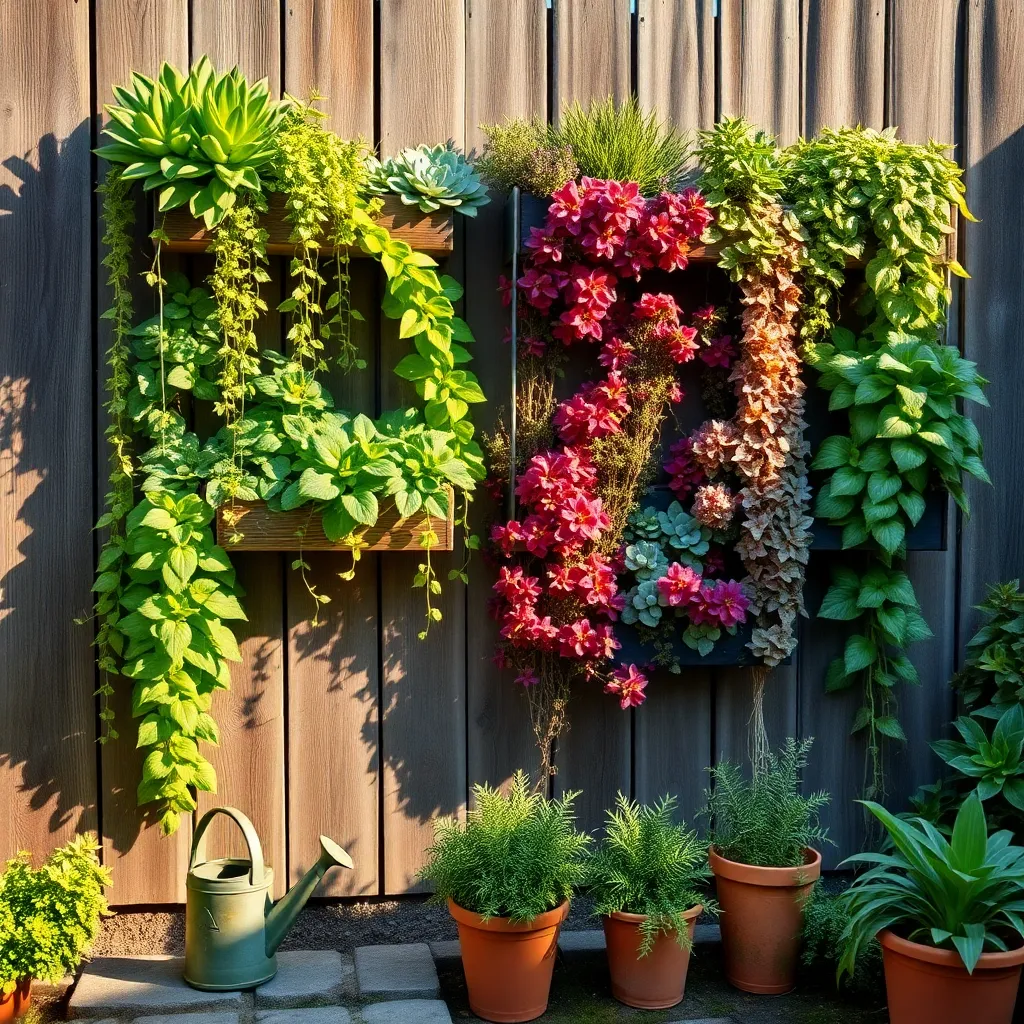
Creating a low-maintenance vertical garden can bring lush greenery to your space without demanding too much time or water. Select plants that are naturally drought-tolerant, like ferns or climbers, which thrive in limited watering conditions.
When setting up your vertical garden, use lightweight, well-draining soil to prevent waterlogging and promote healthy root growth. Incorporating a slow-release fertilizer into the soil mix can give your plants a steady supply of nutrients over time.
Consider installing a drip irrigation system to ensure your plants receive consistent moisture without excessive watering. This technique can be easily automated, reducing your daily upkeep efforts significantly.
For beginners, choosing a range of low-maintenance plants like pothos, philodendrons, or succulents can be a great start. These plants are not only hardy but also adapt well to a variety of light conditions, making them ideal for vertical gardens in different environments.
Creating Your Own Vertical Oasis
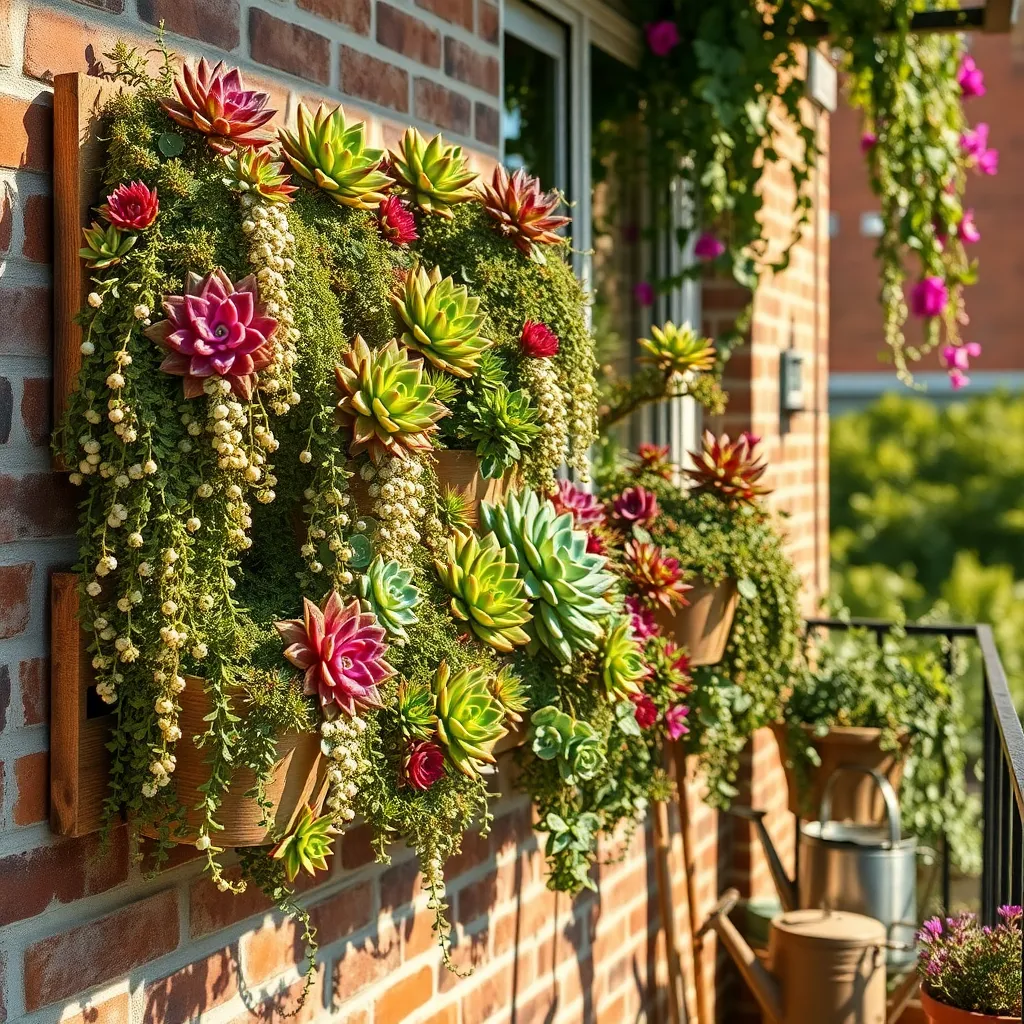
Transforming a simple wall into a lush vertical oasis is both rewarding and water-efficient. Start by choosing drought-tolerant plants like succulents or air plants that thrive with minimal moisture.
Consider using a sturdy trellis or a pocket planter to support your vertical garden. These systems not only provide structure but also enhance air circulation, which is crucial for plant health.
Use a well-draining soil mix, such as one designed for cacti and succulents, to prevent root rot. Incorporating perlite or pumice into your soil can further improve drainage and aeration.
For beginners, start with easy-to-grow plants like pothos or spider plants; they are forgiving and adapt well to various light conditions. As you gain confidence, experiment with herbs like thyme or oregano, which add both beauty and utility to your vertical space.
Water your vertical garden sparingly, allowing the soil to dry out between waterings. A drip irrigation system can be an excellent investment to ensure consistent moisture levels while conserving water.
Regularly check for pests, as vertical gardens can sometimes become havens for insects. A gentle spray of water mixed with a few drops of neem oil can help keep unwanted visitors at bay.
Conclusion: Growing Success with These Plants
In “10 Low-Water Vertical Garden Inspirations,” we explored ten innovative ways to cultivate your relationships, much like a thriving garden that requires careful tending. From understanding the importance of deep-rooted communication to nurturing trust and resilience, each concept offers a unique strategy for fostering enduring connections. We delved into the art of appreciation, the value of shared goals, and the necessity of adaptability, emphasizing how these elements can transform any relationship landscape into a flourishing oasis.
Now’s the time to take action. Choose one relationship concept that resonated with you most and implement it today. Whether it’s expressing gratitude or setting aside quality time, small gestures can cultivate substantial growth in your relationships.
Remember, relationships, like gardens, thrive on consistent care and attention. Bookmark this article as your go-to guide for nurturing your connections, ensuring it’s always at your fingertips when you need a refresher or a dose of inspiration.
Looking ahead, your commitment to these principles can pave the way for a future filled with strong, resilient bonds. Embrace this journey with optimism and watch as your relationships bloom into their fullest potential. Save this wisdom and let it guide you toward lasting relationship success.

